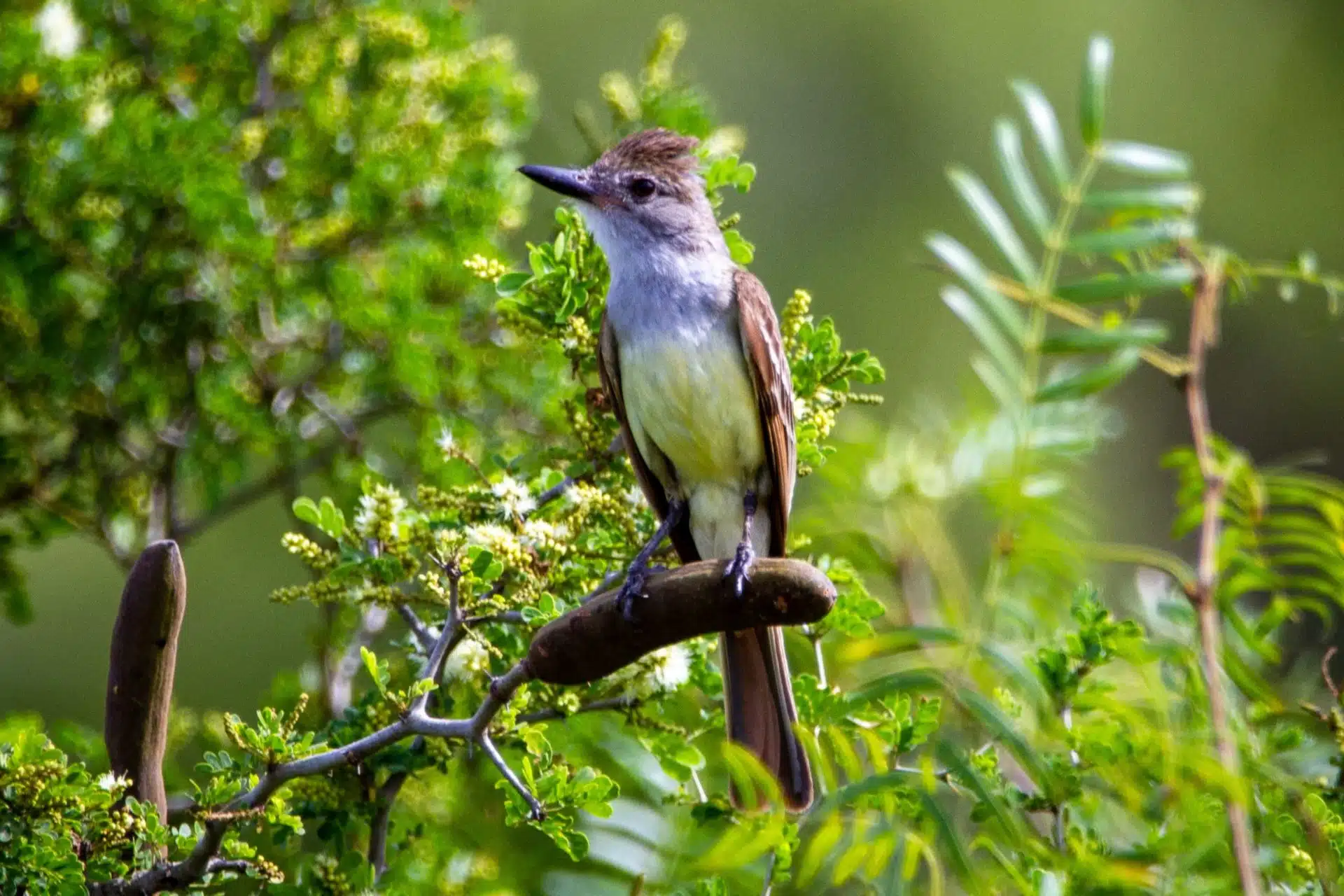Birds
Great Crested Flycatcher
Myiarchus crinitus

Great crested flycatchers breed in the canopy of eastern deciduous forests. They can breed along edges of forest, and don’t require big stretches of unbroken forest canopy to thrive. In the summer months they are often heard more than seen, however migrants can be seen in the lower sections of any wooded lot or shrubby habitat.
These birds spend very little time on the ground. They do not walk or hop, but rather fly from place to place to capture their food. They avoid direct food competition with other birds by capturing their prey high in the air, plucking them from the surfaces of leaves, branches and bark crevices of the canopy,. They eat mainly flying insects, including butterflies, moths, beetles, bees, wasps and flies. They will also eat grasshoppers, crickets and spiders. Even though their primary food source is insects, Great crested flycatchers also eat a large amount of fruit. They swallow one to many small fruits whole and regurgitate the pits all at once.
Great crested flycatchers are cavity nesters. They do not excavate their cavities but take over abandon natural or manmade cavities. Nesting cavities can be 10 to 70 feet from the ground. Both male and female Great crested flycatchers inspect available cavities before determining the perfect one to occupy. Females preform most of the nest building. It may take her almost two weeks to complete. If the cavity is more than 12 inches deep, she may backfill the nest with grasses, leaves, twigs stems, bark and, most commonly, molted snakeskin. She lines the inner three inch cup nest with fine material including fur and feathers. Becky, where do the birds get the snakeskin? Is it skin the snake has molted and left behind?
Breeding begins in June. Females lay one brood of four to five creamy yellow heavily streaked purple- red eggs. Females sit on the eggs for thirteen to fifteen days. Young rely on both parents for fourteen to fifteen days before they fledge the nest.
According to the North American Breeding Bird Survey, great crested flycatcher populations have remained stable. There estimated breeding population is 6.7 million. Local increases maybe due to greater fragmentation, which increases favored breeding edge habitat. Local decreases maybe due to competing nesting cavities from other birds including tree swallows, house wren, eastern bluebird and nonnative European starlings. Removing dead snags from the forest may also contribute to local population decreases. They will however tolerate manmade nesting boxes as an alternative cavity.
Best Location to View: Bole Woods, Old Valley Trail, Pierson’s Creek Loop, Woodland Trail
Color: Reddish-brown on back and wings. Primary wings and tail red orange. Gray crest, throat and top of breast. Bright yellow belly. Black upper bill
Range: Breeding - Southeastern Canada through the eastern and plains states to the Gulf coast. Resident in southern Florida. Winters-Yucatan Peninsula to the tropics of South America.
Size: 6-8"
Wingspan: 13-14"




